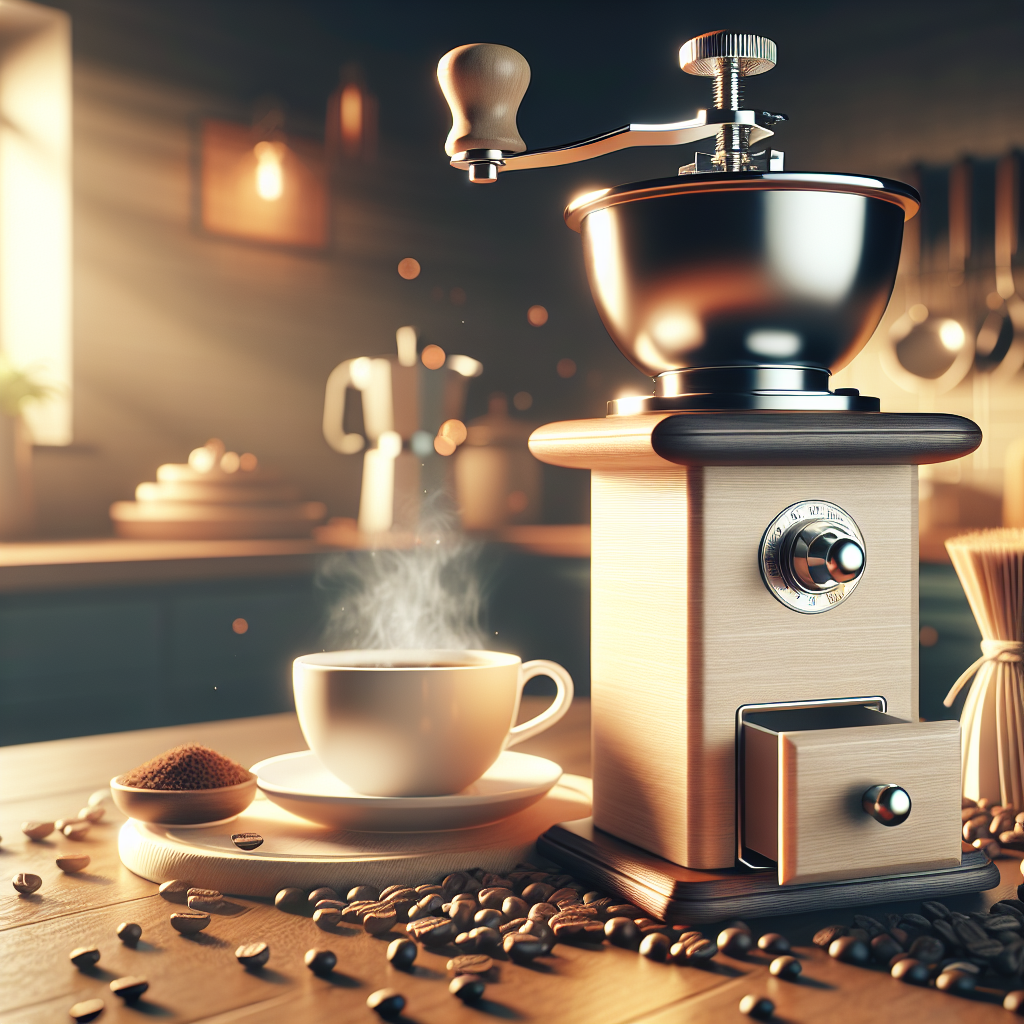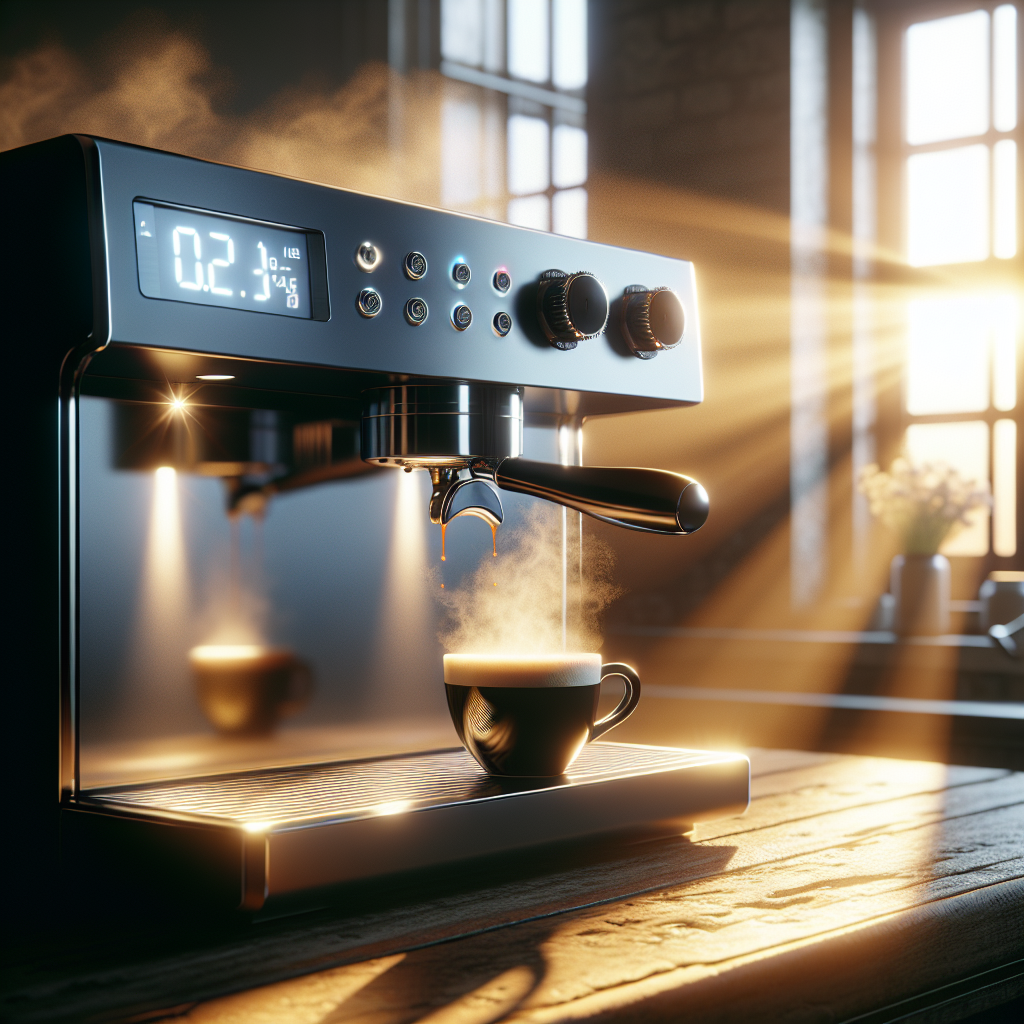“`html
The Ultimate Guide to Coffee Grinders: From Burr vs. Blade to Choosing the Perfect Grind for Your Brew
Introduction to Coffee Grinders
For any coffee lover, the journey to the perfect cup starts with choosing the right coffee grinder. The right grinder not only improves flavor extraction but also plays a pivotal role in determining the grind size, which is essential for the brewing process. With a rich history and evolution behind them, coffee grinders are more than just kitchen appliances—they are the gatekeepers to unlocking the true potential of your coffee beans.
Whether you’re a seasoned coffee enthusiast or just starting, understanding the components and the importance of freshly ground beans can elevate your coffee experience. From burr grinders to blade grinders, the market offers a variety of options tailored to fit different needs and preferences. This guide will walk you through everything you need to know about coffee grinders, so you can make an informed choice and enjoy a superior cup of coffee.
Burr Grinders: The Gold Standard in Coffee Grinding
Burr grinders are widely considered the best in the business. They operate by using two revolving abrasive surfaces—conical or flat burrs—to crush the coffee beans into a consistent size. This consistency is key to extracting the optimal flavor profile from your coffee.
Benefits of Burr Grinders:
- Consistent grind size ensures optimal flavor extraction.
- Available in both manual and electric models.
- Long-term investment for coffee enthusiasts.
Types of Burr Grinders
Burr grinders come in two main types:
- Conical Burrs: Conical burrs use a cone-shaped burr to grind coffee beans. They tend to be quieter and less messy.
- Flat Burrs: Flat burrs use two parallel surfaces to grind the beans and are typically found in commercial-grade grinders.
Maintenance and Cleaning Tips
Regular maintenance is vital to keep your burr grinder in top condition. Disassemble the parts and clean them with a brush or a damp cloth to avoid residue build-up. For detailed cleaning guides, including burr calibration, check out our here.
Blade Grinders: The Affordable Entry Point for Coffee Lovers
Blade grinders are an excellent choice for those new to grinding their own coffee. They use a single rotating blade, similar to a blender, to chop the beans. While they may not offer the same grind consistency as burr grinders, they do provide a more accessible and cost-effective way to start your journey into freshly ground coffee.
Pros of Blade Grinders:
- Lower price point.
- Simple and easy to use.
- Compact and portable.
Cons of Blade Grinders:
- Inconsistent grind size can affect flavor.
- Heat from the blades may slightly alter the coffee’s taste.
Tips for Better Results
To achieve a more even grind using a blade grinder, try shaking the grinder while it’s running and grinding in short bursts. Always ensure the blades are sharp for optimal performance.
Grind Sizes for Coffee Brewing
| Grind Size | Description | Recommended Brewing Method |
|---|---|---|
| Extra Coarse | Very large particles, resembling sea salt. | Cold Brew, French Press |
| Coarse | Large particles similar to raw sugar. | French Press, Percolator |
| Medium Coarse | Particles equal to rough sand. | Chemex, Pour Over |
| Medium | Similar to granulated sugar, a universal grind size. | Drip Coffee, Aeropress (with longer brew time) |
| Medium Fine | Particles smaller than granulated sugar. | Aeropress (short brew time), Pour Over |
| Fine | Flour-like texture, very smooth. | Espresso, Moka Pot |
| Extra Fine | Powdery consistency, like flour or powdered sugar. | Turkish Coffee |
Choosing the Perfect Grind Size for Your Brew
The grind size of your coffee can make or break your brew. Here’s a helpful table to determine the best grind size for various brewing methods:
Using the right grind size can significantly impact the extraction time and flavor of your coffee. For instance, a fine grind is required for espresso, while a coarser grind is ideal for a French Press. Adjusting the grind size to match your brewing method enhances the overall experience.
Experimenting with the grind size can also help you discover personal flavor preferences. If your coffee tastes too bitter, try using a coarser grind. If it’s too sour, a finer grind might be in order.
Maintenance and Care: Getting the Most from Your Grinder
Maintaining your coffee grinder ensures that it performs efficiently and lasts longer. Here are some essential tips:
Cleaning Your Grinder:
- Disassemble the parts for a thorough cleaning.
- Use a brush to remove coffee residue.
- Clean with a damp cloth and allow all parts to dry completely before reassembly.
Preventative Measures
Regularly check for wear and tear on essential components, such as burrs or blades, and replace them as needed. Keep your grinder in a dry place and avoid overloading to prevent motor overheating.
Conclusion: Brewing the Perfect Cup Starts with the Right Grinder
We’ve covered a lot of ground in understanding the significance of coffee grinders. From burr to blade grinders and the importance of grind size, every decision you make affects your coffee’s flavor profile. By investing in the right grinder and maintaining it well, you can consistently brew an exceptional cup of coffee.
For more tips and to explore other coffee accessories, visit us here! Feel free to share your favorite coffee grinder tips and experiences in the comments below!
“`
Shop at Breville now!
https://breville.oie8.net/oqDqrE
Shop Coffee grinder at Amazon now!
Click here!





